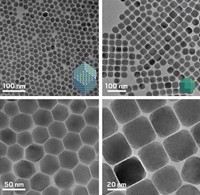Advertisement
Grab your lab coat. Let's get started
Welcome!
Welcome!
Create an account below to get 6 C&EN articles per month, receive newsletters and more - all free.
It seems this is your first time logging in online. Please enter the following information to continue.
As an ACS member you automatically get access to this site. All we need is few more details to create your reading experience.
Not you? Sign in with a different account.
Not you? Sign in with a different account.
ERROR 1
ERROR 1
ERROR 2
ERROR 2
ERROR 2
ERROR 2
ERROR 2
Password and Confirm password must match.
If you have an ACS member number, please enter it here so we can link this account to your membership. (optional)
ERROR 2
ACS values your privacy. By submitting your information, you are gaining access to C&EN and subscribing to our weekly newsletter. We use the information you provide to make your reading experience better, and we will never sell your data to third party members.
Synthesis
Safer Synthesis Of Fluorophosphate Crystals
Method for making analogs of metal oxides avoids hydrofluoric acid
by Jyllian N. Kemsley
May 23, 2011
| A version of this story appeared in
Volume 89, Issue 21
A straightforward route to preparing transition-metal fluorophosphate crystals has been described by researchers at the University of Southampton, in England, opening a new family of complexes to potential applications in energy storage, magnetic, and catalytic materials (J. Am. Chem. Soc., DOI: 10.1021/ja201096b). Metal oxide frameworks have long been popular for such uses. Replacing the oxide with fluoride is one way to alter the materials’ chemistry, dimensions, and performance. Jennifer A. Armstrong, Edward R. Williams, and Mark T. Weller combined anhydrous transition-metal fluorides with phosphoric acid and a fluoride salt or structure-directing agent, heated the mixture in a hydrothermal bomb, and allowed the products to crystallize. The approach eliminates the need for hydrofluoric acid, making synthesis easier and safer, the authors say. So far, they’ve prepared 45 Mn(III), Fe(III), Co(II), and Cu(II) complexes and characterized some of them in ion-exchange reactions, in lithium-insertion reactions of interest for rechargeable batteries, and in magnetic-susceptibility tests. The group observed that the fluoride ions often bridge metal sites, and the frameworks have fluoride-lined channels that aid cation mobility.




Join the conversation
Contact the reporter
Submit a Letter to the Editor for publication
Engage with us on Twitter